A “nature as medicine” movement has emerged in the United States and other countries to encourage doctors and other healthcare providers to write medical prescriptions to visit parks and other natural areas for the physical and mental health benefits. The programs that have been developed to implement the concept typically incorporate the term Park Rx or Nature Rx with “Rx” being a common abbreviation for “medical prescription”. Although there are over 80 local park prescription programs in the United States, Park Rx America is the only nature prescription organization that is national in scope.
Park Rx America boasts 770 registered prescribers, mostly in the US, but now also including Australia and Mexico. The platform currently holds 6,287 parks which are prescribed routinely by a growing number of health and education professionals. By prescribing nature using Park Rx America platform, clinicians and educators take advantage of the added clinical value of specificity of prescription (place, activity, frequency and dose), electronic reminders, and a patient/client-centered commitment to take the first step to redirect their trajectory of illness into one of health.
Social prescribing is popular in the National Health Services of the United Kingdom as well as in Ireland and the Netherlands. Health professionals refer patients with social, emotional, or practical needs to resources available in their communities. It is a way to combat the growing epidemic of loneliness and reduce the spiraling costs of delivering traditional medicine for a variety of chronic diseases through non-clinical methods.
People of all ages are feeling left out, disconnected, and alone despite the unparalleled connectivity afforded by the Internet. In the social prescribing model, the healthcare provider refers the patient to a link worker who facilitates connections to a host of local resources such as cooking classes, dancing, swimming, and gardening that provide social and psychological benefits.
A subset of social prescribing is the nature prescription, which is a specific treatment based upon the benefits of being outdoors in nature. It is based on the biophilia hypothesis that posits that humans have an innate connection to nature and that when that connection is severed, we become more vulnerable to a variety of chronic maladies. Hundreds of research studies show the effectiveness of being in nature on reducing blood pressure, reducing anxiety and increasing happiness.
The concept of Park Rx evolved from the Healthy Parks Healthy People (HPHP) program that originated at Parks Victoria in Australia. Today HPHP is a global movement that promotes parks and natural areas as health resources and shows that spending more time in them is a key to improved societal health. In the United States HPHP and Park Rx have been promoted by the National Park Service.
Due to the proliferation of electronic devices that provide instant access to addictive content, the amount of time spent viewing screens in the United States has escalated to a per person average of over 8 hours per day. This sedentary activity has reduced physical activity and increased the amount of time spent indoors. At the same time, we are seeing dramatic increases in a variety of chronic diseases, including, obesity, diabetes, hypertension, anxiety, and depression.
The concept of Park Rx leverages the trust relationship between the healthcare provider and the patient to incentivize patient visits to parks and other outdoor locations. Prescriptions are written within the clinical setting for patients to visit parks and other nature-rich areas for the physical and mental health benefits. The prescriptions provide information on where to go, when and how often to go, and what activity to perform while there. The mission is to get the patient to have a series of positive experiences outdoors that develop into a life-long habit of spending time outdoors.
Research challenges include learning more about dosage. How much time does someone need to spend outdoors in a particular setting to receive the intended health benefit?
Although there are hundreds of research studies showing correlation between spending time in nature and improved health they vary significantly in methodological rigor. The gold standard for research among healthcare providers is the randomized controlled trial. The first multi-year RCT of Park Rx is about to commence in Washington DC. The study, which is funded by the National Institutes of Health, will look at the physical and mental health outcomes of park prescriptions issued using the electronic prescribing platform developed by Park Rx America. Dr. Robert Zarr, MD, Founder of Park Rx America, is a co-principal investigator on this study.
The increasing pressure of the medical industrial complex on doctors to see more patients in less time, the increasing demands on doctors’ time spent on documentation in the electronic health record, and the stress of having to work with the labyrinth of insurance and pharmaceutical companies in the United States, collectively make it difficult to get the attention of health care professionals to experiment with nature prescriptions. Likewise, the fragmentation and absence of uniformity among health policy organizations with overlapping agendas in the arenas of integrative medicine, preventive medicine, and lifestyle medicine have frustrated the promotion and adoption of clear guidance on the use of Park Rx in the United States. However, the level of interest in “nature as medicine” continues to grow as evidenced by a proliferation of research studies on the connection between nature and human health and the success of US-based international NGOs such as Walk with a Doc and the Association for Nature and Forest Therapy.
Walk with a Doc with 455 chapters in 33 countries is about doctors sharing health information while leading walks tailored to the pace of the participants. Association for Nature and Forest Therapy has trained over 800 guides in 48 countries on how to engage people in a series of experiences in a forest setting or nature-rich environment. The work of ANFT is based on the Japanese concept of Shinrin-Yoku, which translates to “forest bathing.” The concept of Park Rx is also expanding internationally. In October 2018, the National Health Service Shetland (Scotland) adopted “nature prescriptions” as an authorized tool to help treat a range of medical conditions, including high blood pressure, anxiety and depression.
Going forward, Park Rx America is working to normalize the concept of Park Rx in a variety of non-medical settings. Programs in public schools, colleges and universities, and integration with corporate health and wellness programs will establish a broad base of information and support to promote the health benefits of being outdoors. Partnerships, such as with Exercise is Medicine, a global initiative of the American College of Sports Medicine that promotes the inclusion of physical activity in patient treatment plans, are helping drive the message that exercise is good, but doing it outside is even better.
References
- Joy James, Richard W. Christiana & Rebecca A. Battista (2019) A historical and critical analysis of park prescriptions, Journal of Leisure Research, 50:4, 311-329, DOI: 10.1080/00222216.2019.1617647
Zarr, R., Cottrell, L., & Merrill, C. (2017). Park Prescription (DC Park Rx): A New Strategy to Combat Chronic Disease in Children, Journal of Physical Activity and Health, 14 (1). http://dx.doi.org/10.1123/jpah.2017-0021





Leave a Comment